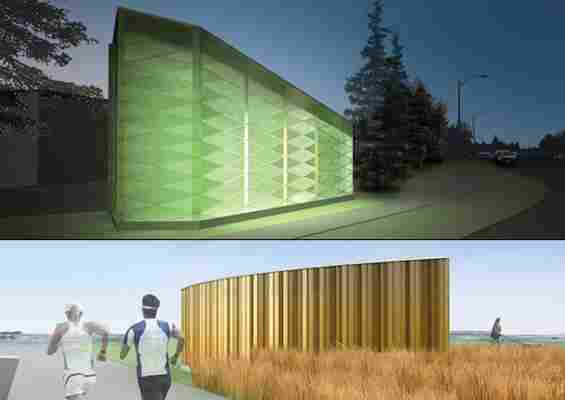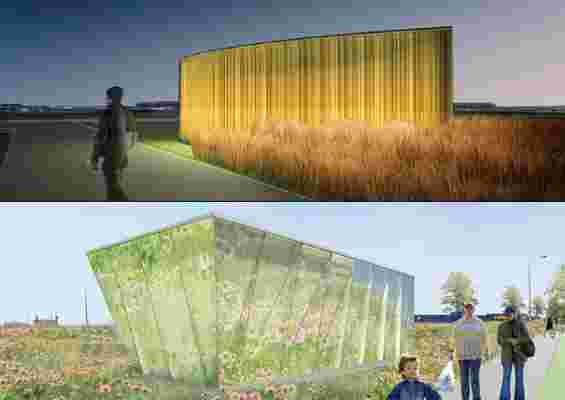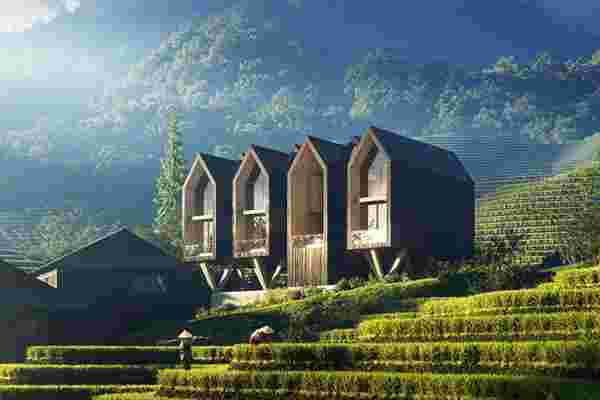
Terraces of rice paddy fields cascade down mountain slopes so evenly, from a bird’s eye view, it might appear they’ve been machine-cut and curated, but these world wonders come with an ancient history of farming diligence and a respectful tactile approach when working the land. Many terraced rice paddy fields are designed by adhering to the curving gradient of the mountain, carving massive steps into its preexisting contours. Zooming out, the individual plots of rice transform into rows of staggered terraces forming both sinuous and moiré patterns. Noticing the beauty and cultural significance of terraced rice paddy fields, Denis Guchev with Studio Precht imagined what living amidst the farming wonders might look like with his architectural visualization project, Rice Pad.
Resembling the congruency of multiple rice paddy terraces, Rice Pad’s contiguous pitched roofs mimic rows of high mountain summits – the same landscape into which terraces of rice paddies are carved. Rice Pad would likely be ebony-stained to easily slink into the darkness of night come sundown, with either pine or ashwood accents for each roof’s eave and the main centered gable. During the day, sunlight might reflect off the flooded rice paddies, lighting up each home’s dark panels of timber. Then at night, warm, yellow light pours from Rice Pad’s own terraces and windows, becoming a sort of lighthouse between the curving tides of rice paddies. The seven-roofed structure appears as four cantilever main houses, joined by what appears to be an exposed hallway that runs perpendicular to each house. Floor-to-ceiling windows fill the entirety of each house’s front-facing facades, offering expansive views of the rolling terraces of rice paddy fields for miles.
In the year 2020, we’ve seen some pretty impressive eco-friendly architectural designs, like modular cabins, houseboats, and tiny homes, that seamlessly blend into their surrounding natural environment. Some houses are constructed entirely offsite and then transported to a vacated plot of land deep in the forest. Others might utilize steel moorings, like some floating homes in Amsterdam. Devising a plan to bring Rice Pad to the terraced wonders of rice farming safely and harmlessly is another ball game entirely, but if 2020 taught us anything, it’s to expect the unexpected.
Designer: Denis Guchev x Studio Precht
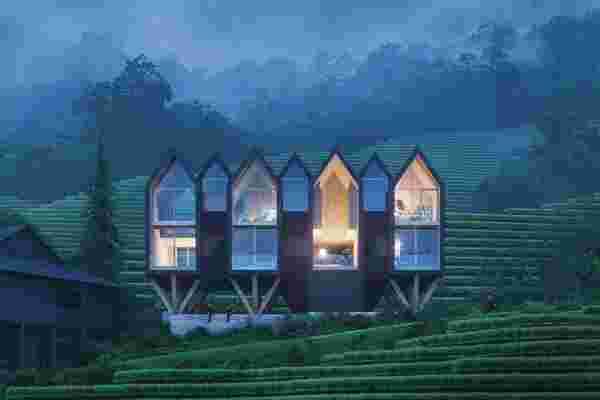
One Fantastical Technology Campus
Those architecture masters over at UNStudio have their work cut out for them, and they’ve got the knives to do it. Today their project is Plot A of the Singapore University of Technology and Design campus (SUTD.) This location is Singapore’s fourth and most prestigious university, located on a site equalling 76,846 m². This set of buildings will be a place where technological innovation and economic growth will be driven, where advancement is their middle name, where people, ideas, and innovation spring forth and flourish!
This university will be built around four “key academic pillars:” Architecture and Sustainable Design (ASD), Engineering Product Development (EPD), Engineering Systems and Design (ESD) and Information Systems Technology and Design (ISTD). It’s around those pillars, the curriculum offered at the school, interaction between the disciplines, the professional world, and the community “at large” that UNStudio hopes to build this one-day-spectacular campus.
UNStudio’s Ben van Berkel has this to say about the project:
The largest points of organization in the campus’s design are the LIVING and the LEARNING “spines” which cross, creating a central point at which all corners of the SUTD campus meet. It is through these connecting points that professionals, alumni, students, and faculty cross paths on the daily. Take a peek and think about enrolling someday!
Additional credits and details:
Designers: UNStudio
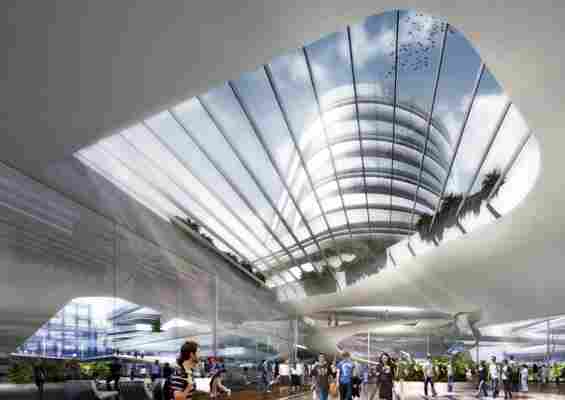
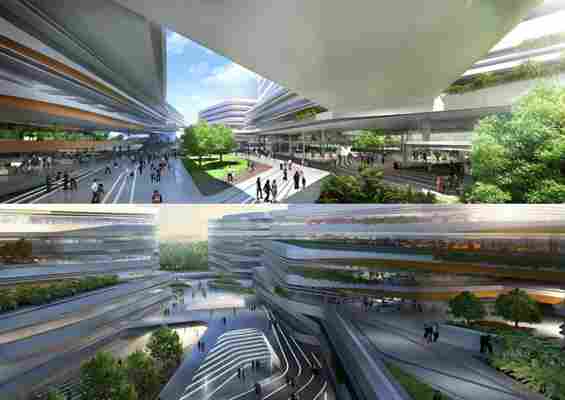
Emergency Exits of Splendor
Many gigantic cities in this modern wonderful world of ours have underground transit. Under the ground you’ll find tunnels with trains galore, traveling all around the city and sometimes even under great bodies of water. Required with these underground tubes are emergency exits where people can easily escape or simply walk up in an orderly manner. What Paul Raff Studio and IBI Group Architects have here in Toronto Canada is a series of emergency exits with lovely style: FOLLIES, for your pleasure.
Each of these four designs are shown in the light and in the dark – showing how fabulous they show themselves to be during all times of the day. Each of these pieces of architecture aims to make a positive impact on the city they sit in, attempting to “integrate life safety requirements within a strategy that also addresses issues of human scale, context, and beauty.”
The exterior of each building is made up of colored multi-layered glass with a subtle artistic essence that’s passed on to each passerby. Glass employed on each of these buildings is strong enough to withstand a hammer blow. Each building here is made to not only reflect the designers wish to live inside a human society, but also to live inside the aesthetic context in where they specifically sit.
Paul Raff Studio is Paul Raff, Scott Barker, Tom Knezic, Farid Noufaily, Samantha Scroggie, Gary Siu, Sean Solowski, Jane Son, Ladan Sharifpour, and Alice Wong)
Architects: IBI Group Architects
Designers: Paul Raff Studio
